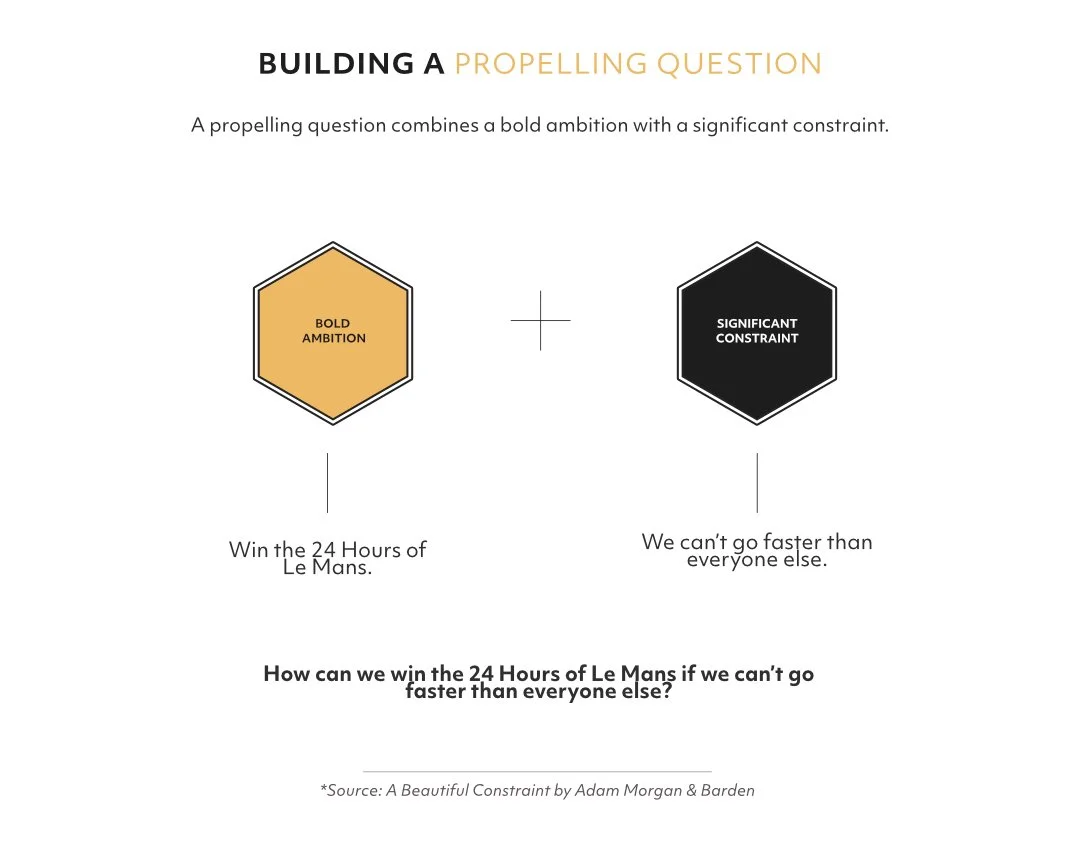Unlocking Innovation through Constraints
When it comes to bringing ideas to life, launching innovations that solve problems and amplify the impact of our work's mission, one of the most underutilized tools lies in working with constraints.
How we feel about constraints (really)
Usually, when the word 'constraints' arises in the life of a leader, it evokes a range of negative emotions. By 'constraints', we mean the limitations or restrictions that we often face in our work, such as tight deadlines, limited budgets, or scarce resources. We have a love/hate relationship with them. Deadlines on the surface are a reality that is healthy for most projects, but if you have ever been up against some impossible ones, deadlines bring a sense of dread. Budget constraints are a necessary part of maintaining balance at the bottom line, ensuring that our paychecks are not affected and organizations don't operate in the red. However, tight budgets can feel stifling, and seem to limit our possibilties a bit too much at times.
A close friend of mine always experiences a physical change in her face when constraints arise, and would quickly admit that in her work, "I hate constraints!"
Constraints may evoke negative feelings, but upon closer examination, they play a crucial role in our work. We are all creatives who ares solving problems and launching ideas that matter to the mission, and learning to live in the tension of constraints is simply part of the process. Yet what if we could flip the script and see them as a crucial tool for getting things done and bringing to life game-changing solutions to our mission?
Constraints unlock innovation
Flipping the script begins with an honest look at the role of constraints in the world around us. That story gives us a different vibe altogether. Here is the spoiler, constraints have the power unlock innovation. Consider a few of these examples.
1. Dr. Seuss & Green Eggs and Ham — Creativity within a 50‑word vocabulary
“Green Eggs and Ham” was written because of a challenge to write a book using only 50 words. The constraint led to one of the most iconic and memorable children’s books ever. ( Source -https://www.theladders.com/career-advice/the-power-of-constraints-how-dr-seuss-used-only-50-words-to-write-his-best-selling-book-of-all-time?utm_source=chatgpt.com)
2.Apollo 13: “Failure is Not an Option”
When the Apollo spacecraft was damaged during lauch, NASA engineers had to build a CO₂ filter using only the materials on board—a legendary example of constrained innovation under extreme pressure. (https://gizmodo.com/this-is-the-actual-hack-that-saved-the-astronauts-of-th-1598385593?utm_source=chatgpt.com)
3. BRCK – Internet for the Offline World
Unreliable electricity and internet in rural Africa prompted a team in Kenya to develop BRCK. This battery-powered, rugged WiFi device can connect to the internet even in harsh conditions. The non-profit Ushahidi created it to support education and crisis response.
There are many more examples, ranging from products to lifesaving machines and everything in between. For instance, the invention of the Post-it note was a result of a failed adhesive experiment, and the development of the first iPhone was constrained by the available technology at the time. All of these examples consistently illustrate that constraints have the power to unlock innovation.
Does the name Macgyver ring a bell. If not, go enjoy some cringeworthy clips on Youtube right now. The 80's action star used whatever was available to save the day. And while his actions are extreme and unlikely to have occurred in real life, we have had moments where we had to act like MacGyver our way out of it with whatever resources were available.
How to begin leveraging constraints for your work
Start by naming them. When we take the time to name them, we define the box for our work and all its variables. People, Financial, Time, and Methods are four great categories to start with.
Define your bold ambition. What problem are you trying to solve that could transform your work? What idea are you trying to launch that could the move the mission forward? Create a one sentence takeaway that sums it up.
Define your biggest constraint. Go back to the list to constraints, and rank them. Which one is number one and if could be overcome could impact the outcome. Write what it is and why it is the top choice.
Create a propelling question. Combine your bold ambition and significant constraint into something called a propelling question. This concept from authors Mark Barden, is used to bring clarity to the possible solutions and where you should look for answers. Audi used the question "How can we win the 24 hours of Le Mans if we can't go faster than everyone else" This led them to discover fuel efficiency as their answer. If they created a disele powered super car, they could pit less, and be on the road more. The result was three straight victories in a race they had never been close to winning before.
So, the next time you're faced with a tight deadline or a limited budget, instead of feeling dread or frustration, try to see it as an opportunity to think outside the box and come up with innovative solutions.

